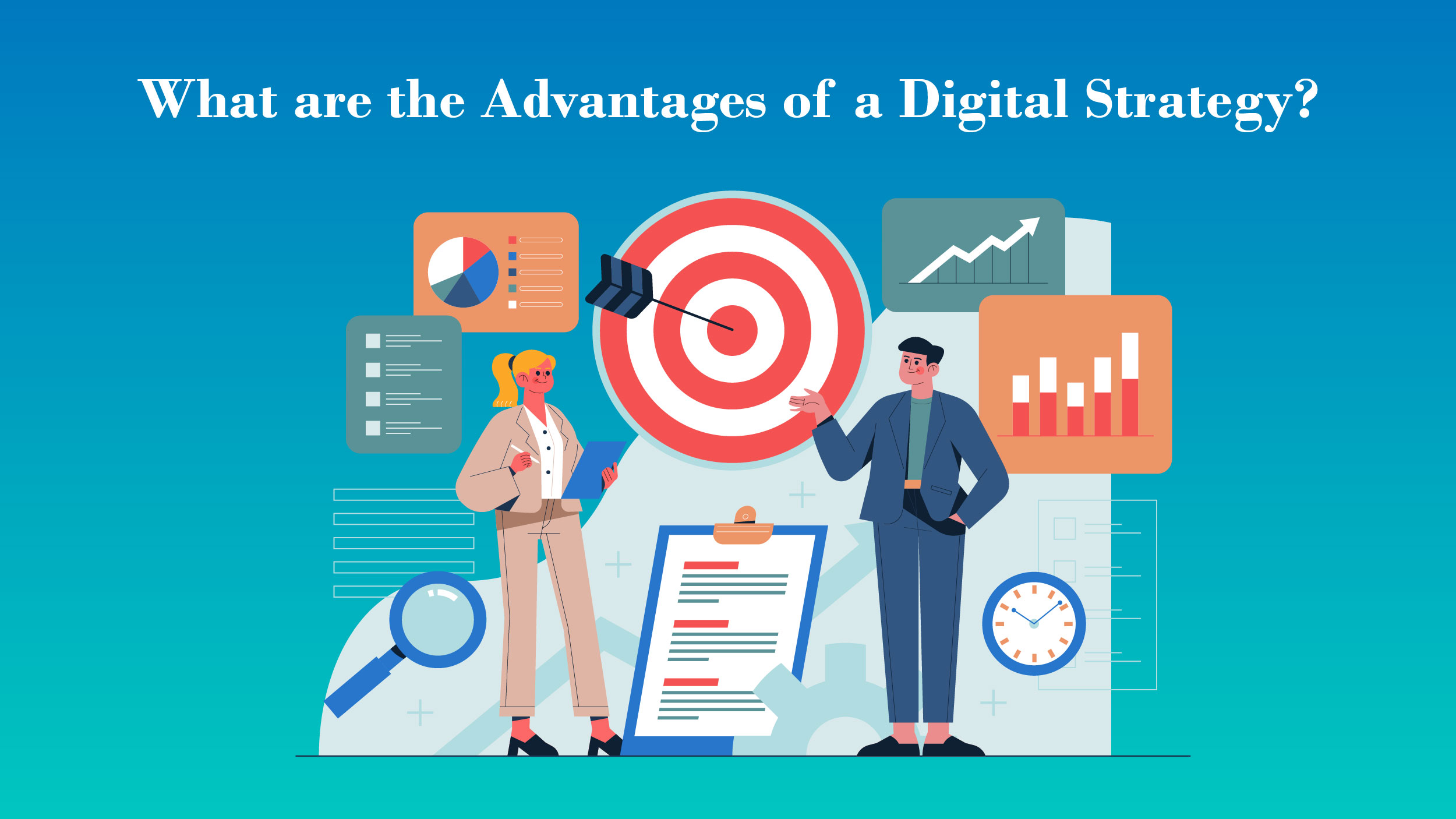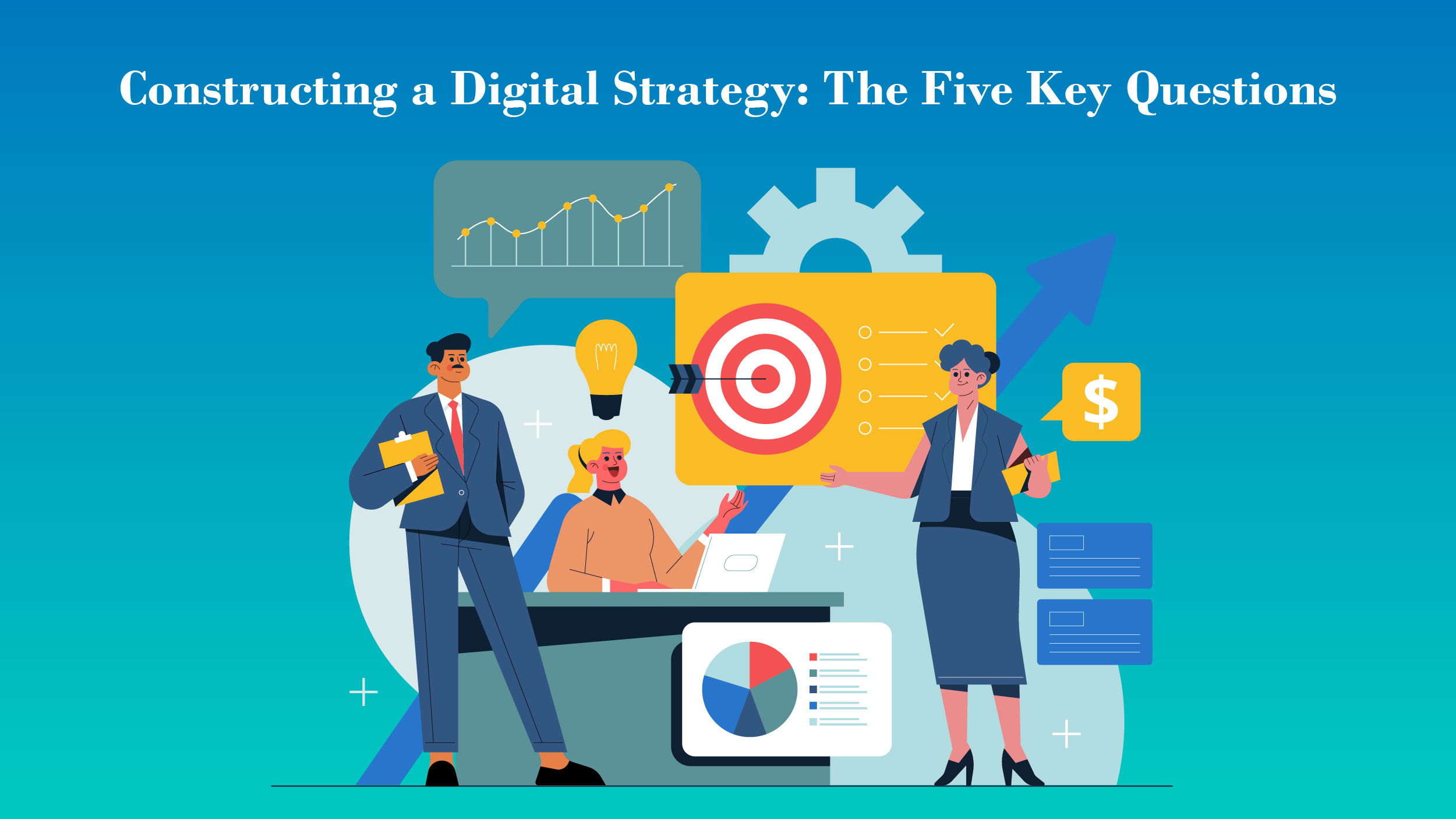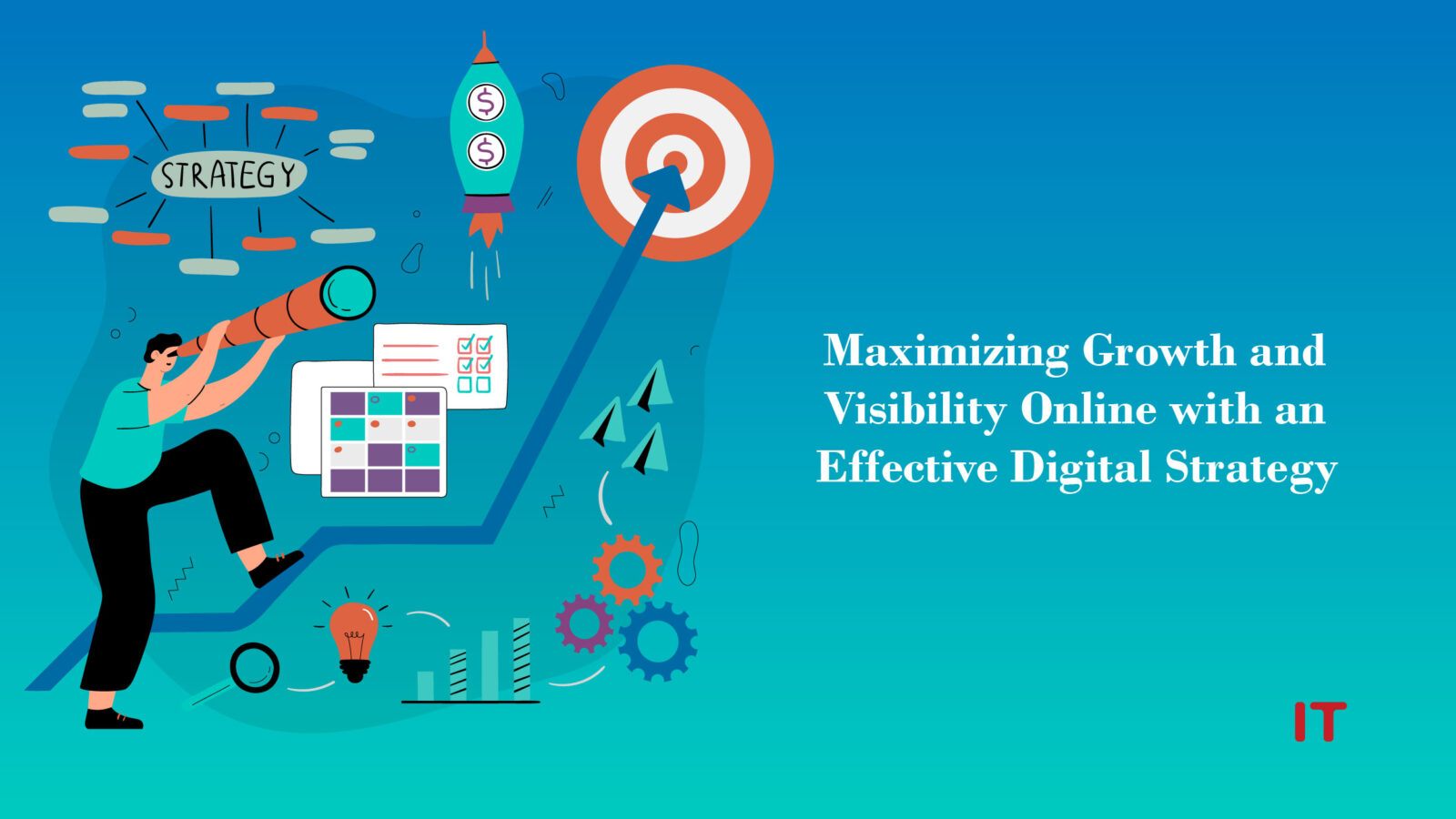In today’s business landscape, it’s no secret that going digital and establishing an online presence are crucial. However, the journey toward digital transformation can often feel like navigating through uncharted territory without a map. To truly stay ahead of the competition, leverage current trends, and prepare for future innovations, a well-defined digital strategy is your best ally. That being said, let’s get started and understand everything about it.
What is a Digital Strategy?
A digital strategy is a meticulously crafted plan that utilizes digital initiatives to achieve a company’s objectives. While it might sound straightforward, creating a digital business strategy is a complex task that demands expertise and experience for successful implementation. Moreover, its definition varies depending on who you ask within the organization.
For the marketing department, it revolves around web channels like social media and email. Finance professionals may focus on online revenue tools, while IT specialists consider the cloud, and the operations team delves into data analytics. Bringing all these different views together to create a single digital transformation plan that matches the overall business plan is very tough. This challenge often leads to companies not achieving their goals.
In 2023, Gartner puts the spotlight on digitalization, emphasizing the need to revamp business models rather than just processes. Yet, the popular take is that a robust digital content strategy should blend process enhancement and innovative business models.
While “digital strategy” may seem all about tech, it’s equally vital to address the nitty-gritty aspects like data management and resource handling during tech adoption. This is precisely why it frequently circles back to reviewing your digital transformation game plan. It’s the winning combo of tech and practical implementation that truly propels your organization into the digital era.
What are the Advantages of a Digital Strategy?
 Having a well-defined digital transformation strategy offers clear benefits to any business venture. While digital tools can be transformative, it’s essential to remember that they should serve as enablers rather than being adopted blindly to chase the latest technological trends.
Having a well-defined digital transformation strategy offers clear benefits to any business venture. While digital tools can be transformative, it’s essential to remember that they should serve as enablers rather than being adopted blindly to chase the latest technological trends.
Developing a perfect blueprint allows you to see the bigger picture, identifying where digital solutions can enhance efficiency and effectiveness. This plan becomes a valuable tool for reducing waste, keeping departments on track, tracking progress, and making necessary adjustments.
Also Read: Understanding Behavioral Analytics: What Are Your Users Really Doing?
Digital Strategy and Digital Transformation: Understanding the Difference
It’s common to use the terms “digital strategy” and “digital transformation” interchangeably, but they are closely related yet distinct concepts. Digital transformation encompasses changes in three key areas: operational processes, customer experience, and business models. Achieving digital transformation necessitates a comprehensive organizational effort, often entailing shifts in business culture.
Conversely, digital strategy is primarily centered on technology rather than cultural shifts. It addresses changes in business models and employs technology to establish the necessary capabilities for a company to thrive as a digital enterprise. Formulating a digital strategy is a critical component of the transformation process, ensuring that technology is harnessed in a way that aligns with the company’s overarching business objectives.
Constructing a Digital Strategy: The Five Key Questions
 Rather than approaching the development of a digital customer experience strategy with a generic inquiry like, “What’s our digital strategy?” Harvard Business Review recommends a more focused approach by asking the following five critical questions. These inquiries serve as a solid foundation for comprehending the role of digital technology in your organization:
Rather than approaching the development of a digital customer experience strategy with a generic inquiry like, “What’s our digital strategy?” Harvard Business Review recommends a more focused approach by asking the following five critical questions. These inquiries serve as a solid foundation for comprehending the role of digital technology in your organization:
- Does digital technology alter the scope of businesses you should engage in?
Consider whether digital technology opens new avenues for your organization or prompts a reevaluation of the businesses you currently operate.
- How can digital technology enhance the value you provide in your existing businesses?
- How can digital advancements optimize and augment the value you deliver within your current business domains?
- Could digital technology lead to changes in your target customer base?
Evaluate if digital technology has the potential to reshape your ideal customer profiles or expand your reach to new segments.
- Does digital technology impact the value proposition for your target customers?
Delve into how digital technology might redefine the benefits and solutions you offer to your target customers, adapting to their evolving expectations.
- In what ways can digital technology strengthen your enterprise capabilities that set you apart from your competition?
- How can digital technology fortify the distinctive strengths and competencies that distinguish your organization from your competitors?
For some companies, these may yield immediate and apparent responses, particularly those that have encountered disruptions or competition from emerging digital players. The goal here is to ascertain precisely how digital technology transforms your operations and then refine your insights from broad industry trends into specific principles that will underpin your strategy. By commencing with a crystal-clear understanding of your company’s mission and vision, you can avoid squandering resources and time on technology implementations that fail to confer new competitive advantages.
Winding Up
Businesses may efficiently reach and engage their target audience, promote client acquisition and retention, and ultimately accomplish their goals by utilizing technology and digital platforms. Organizations need to be flexible and continuously adapt their digital strategy in order to stay successful and relevant in a constantly shifting environment as technology advances.
































